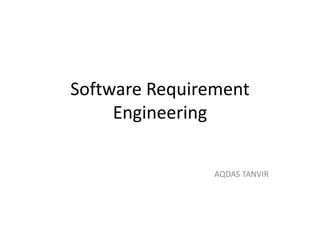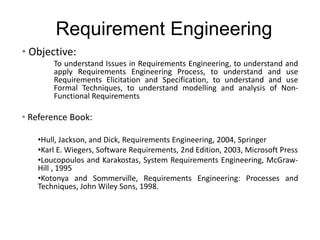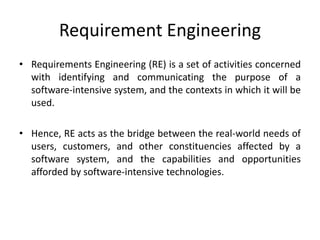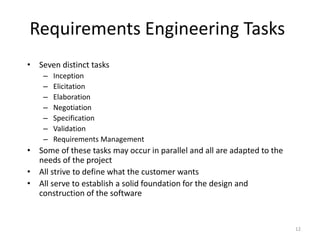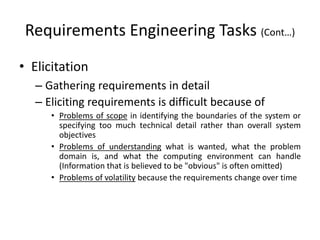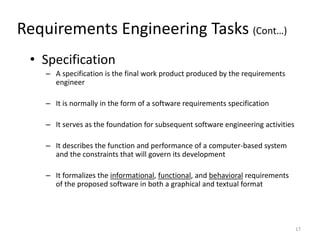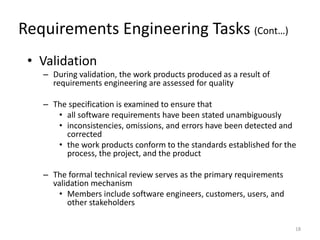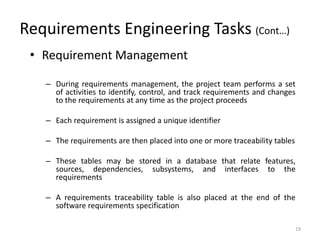The document discusses software requirement engineering. It outlines the objective of requirement engineering as understanding issues, processes, elicitation and specification techniques. It describes requirement engineering as identifying user needs and bridging them to software capabilities. The key tasks are inception, elicitation, elaboration, negotiation, specification, validation and management. Requirements errors are most costly if found late, so requirement engineering aims to establish a solid foundation early in development.
